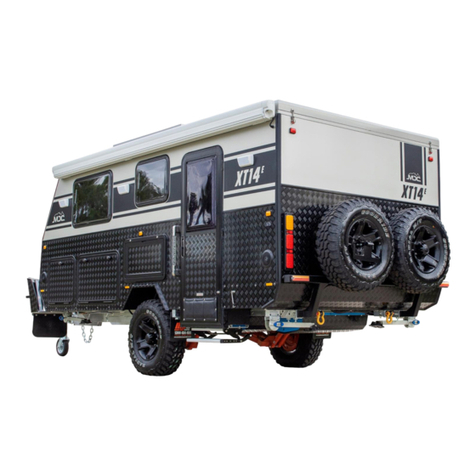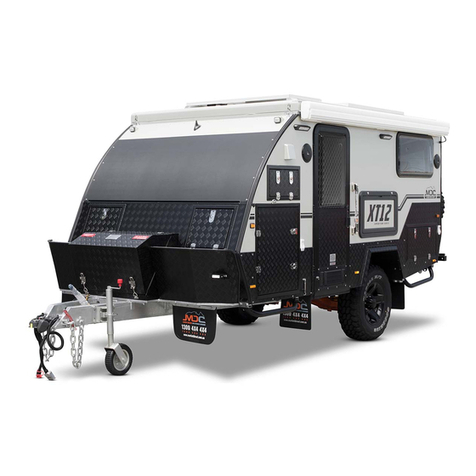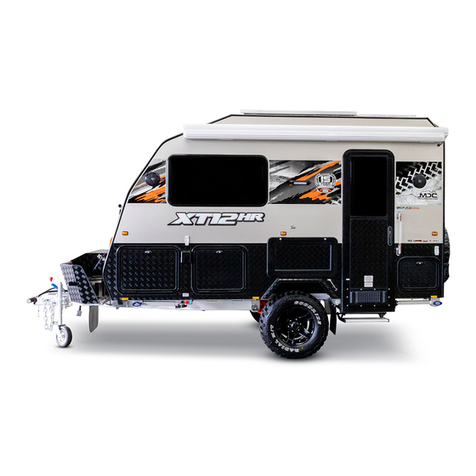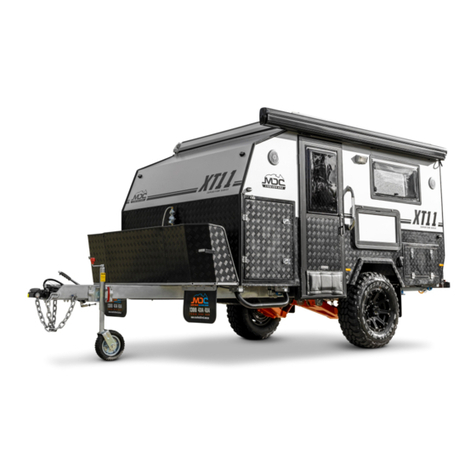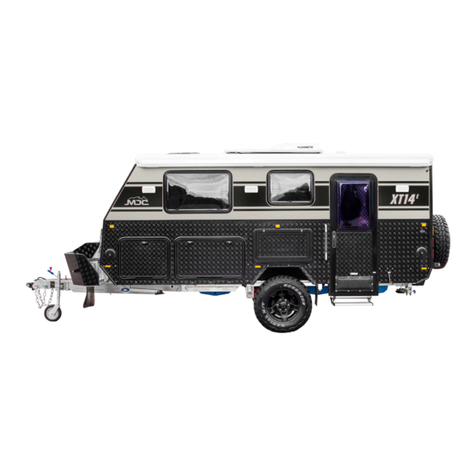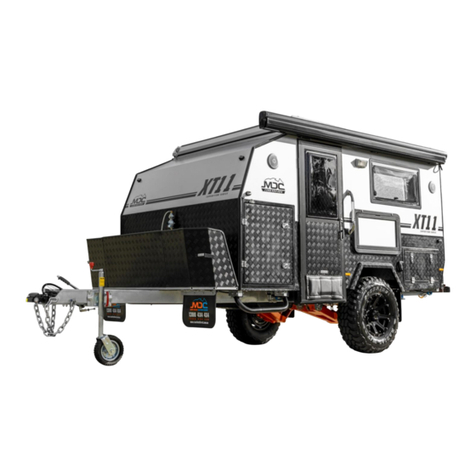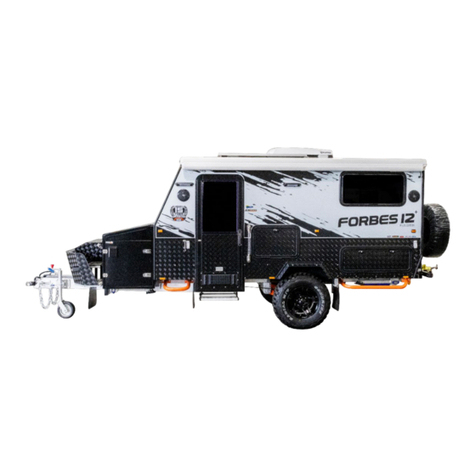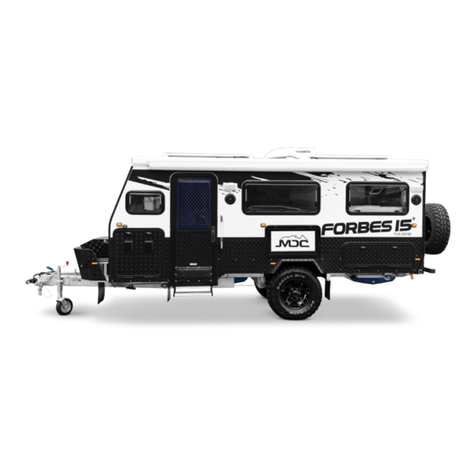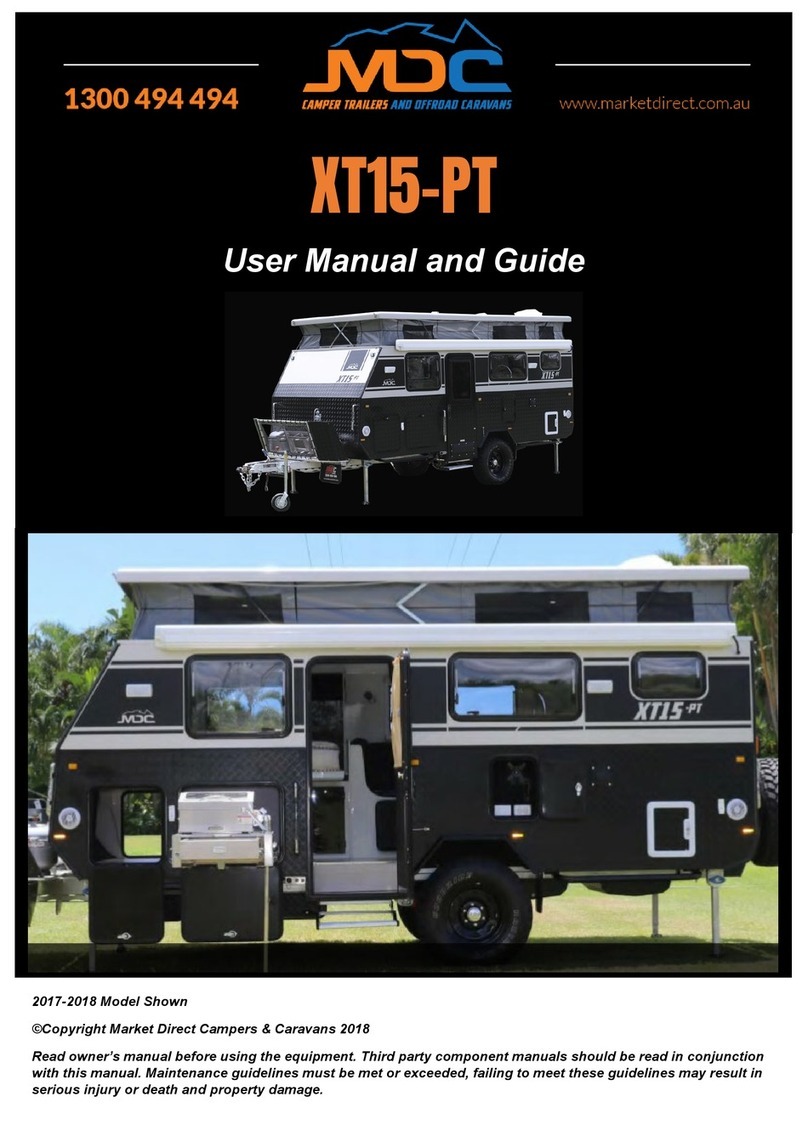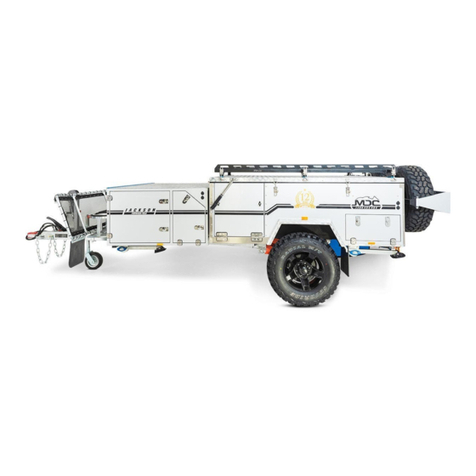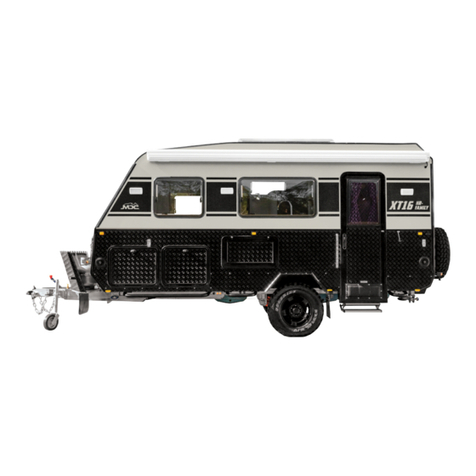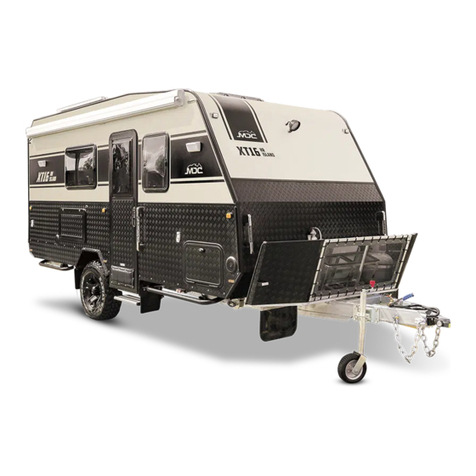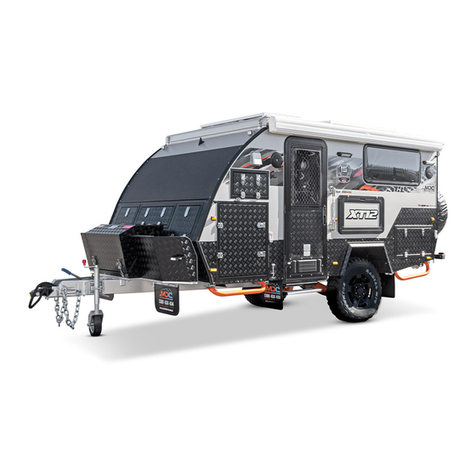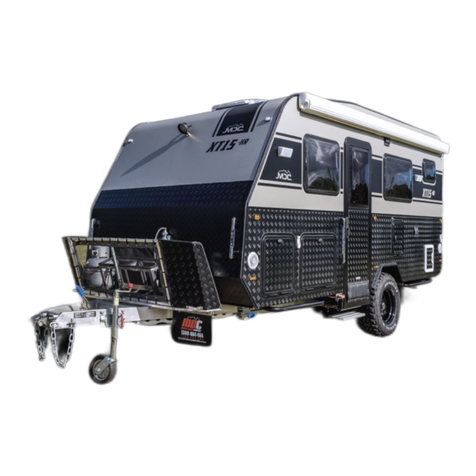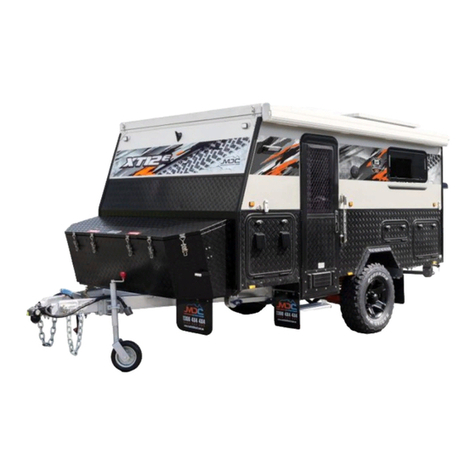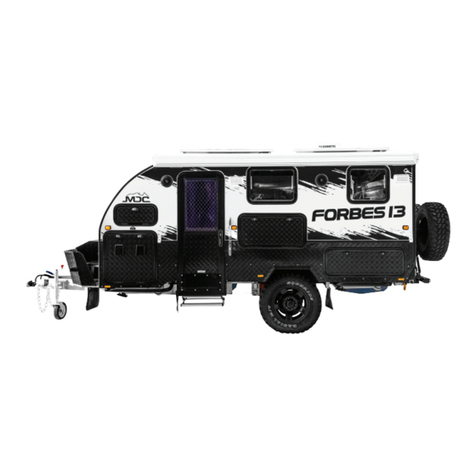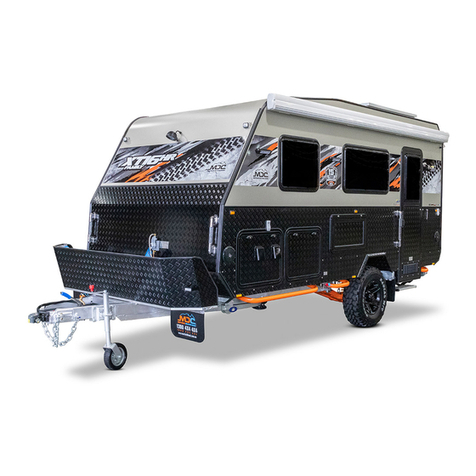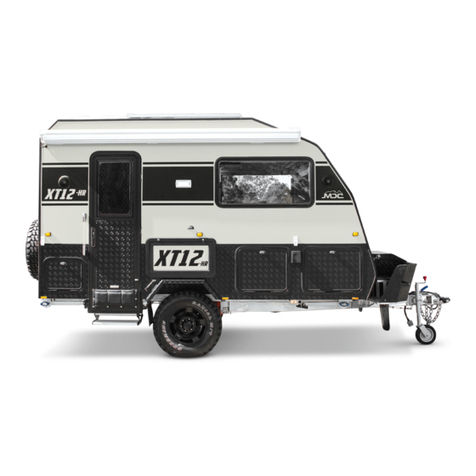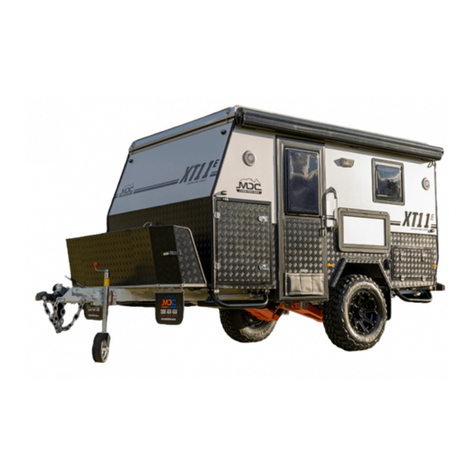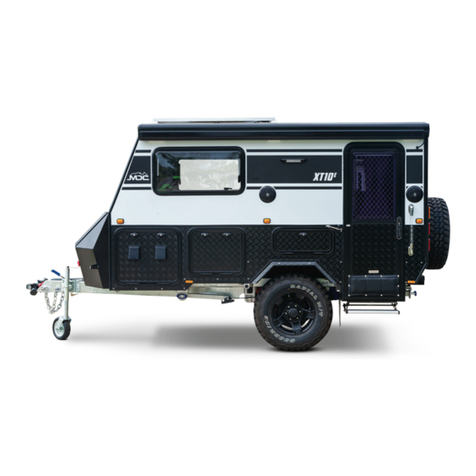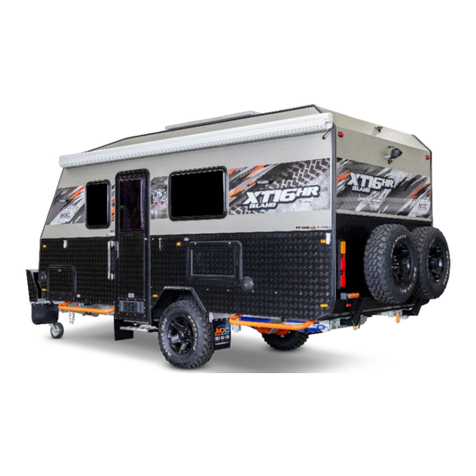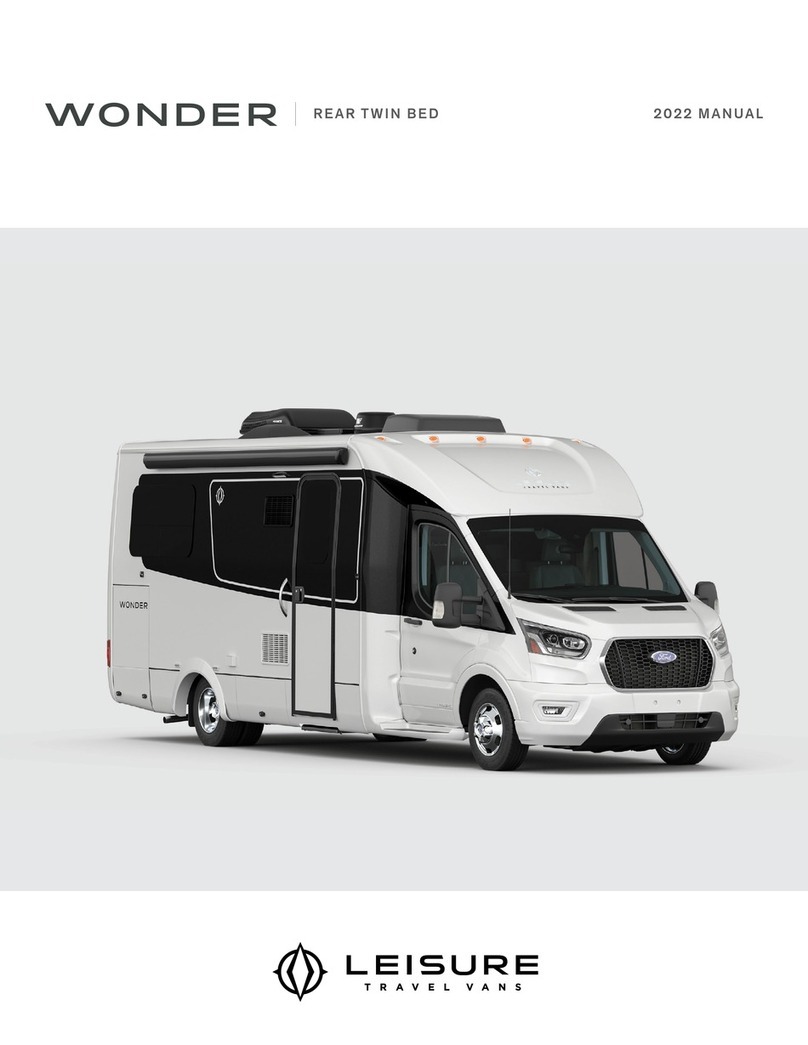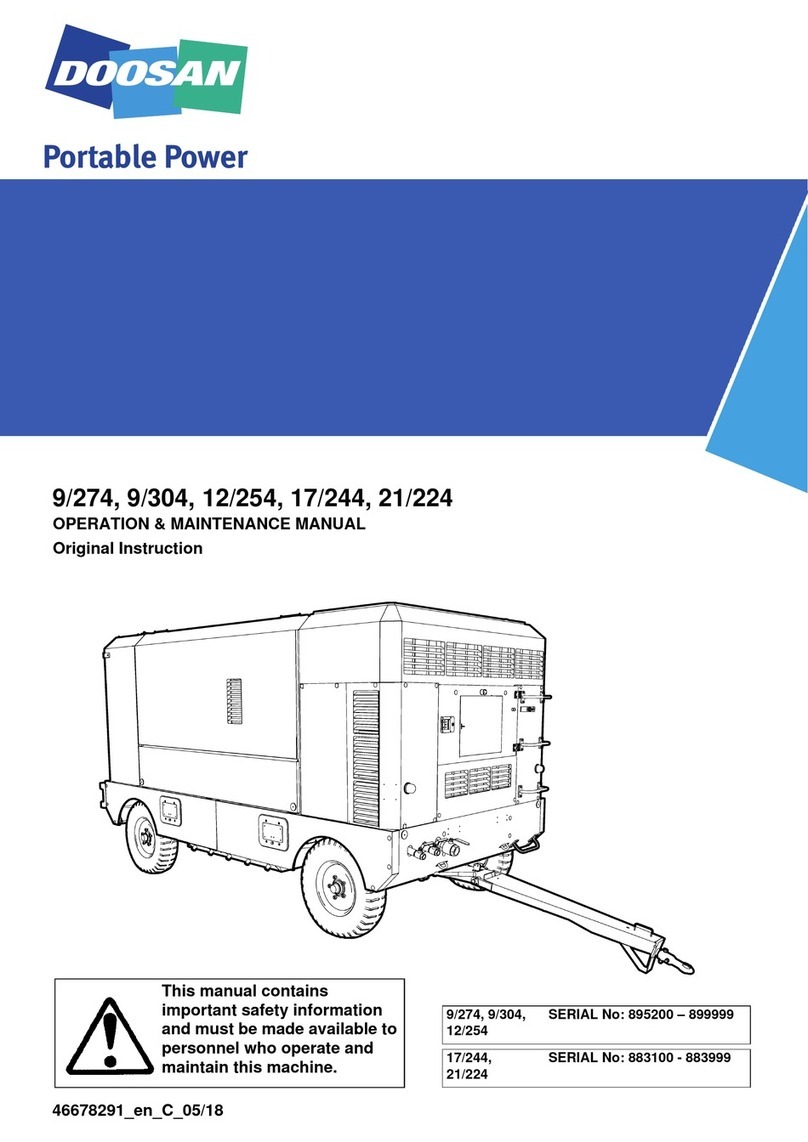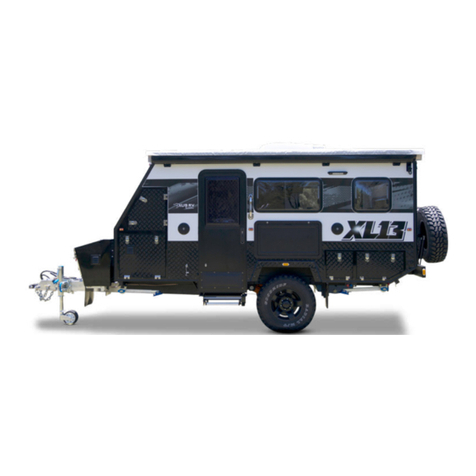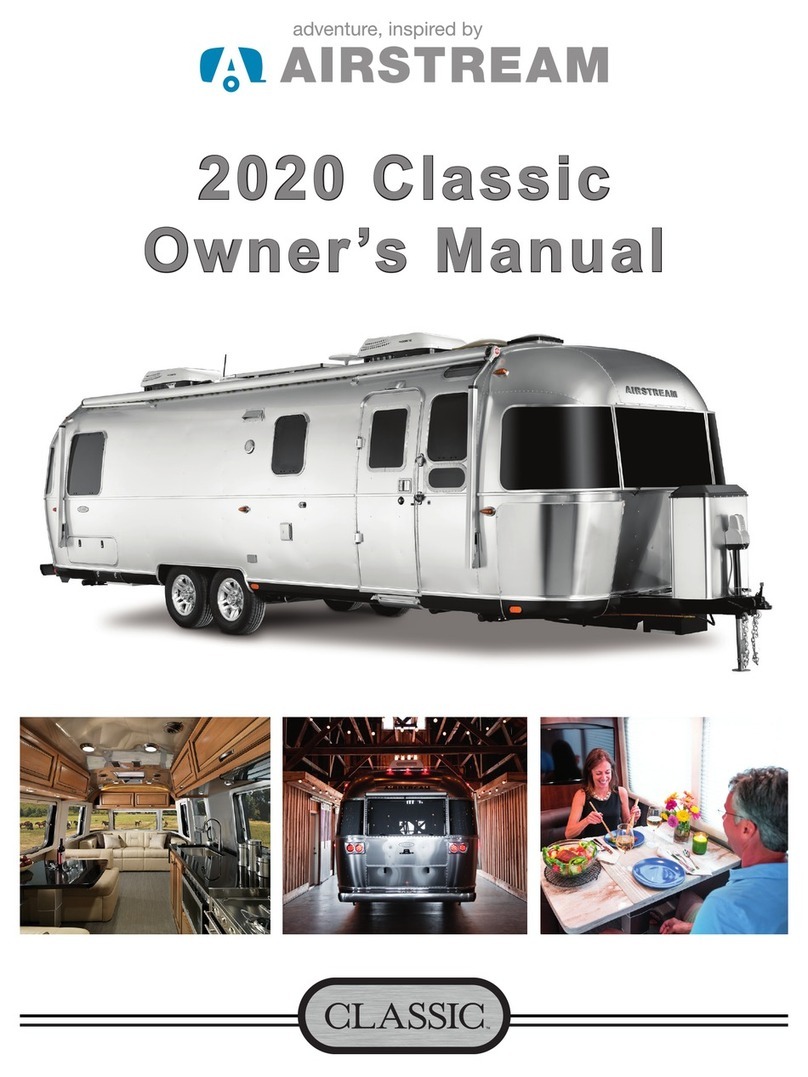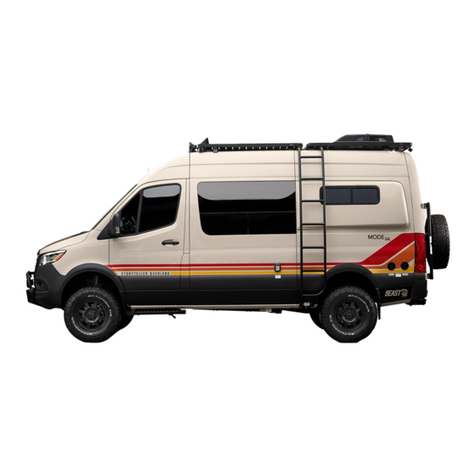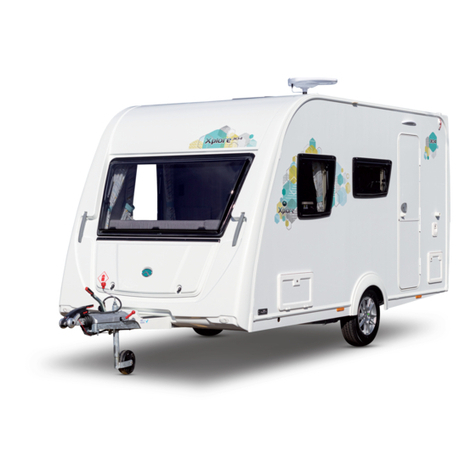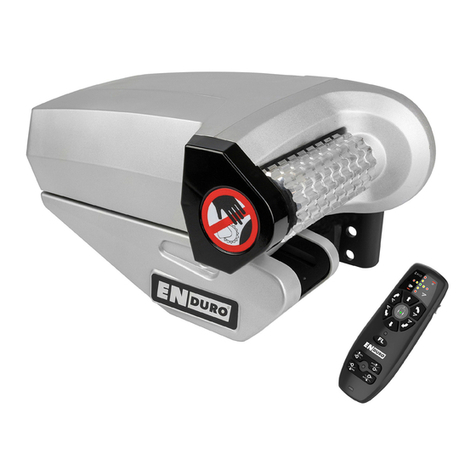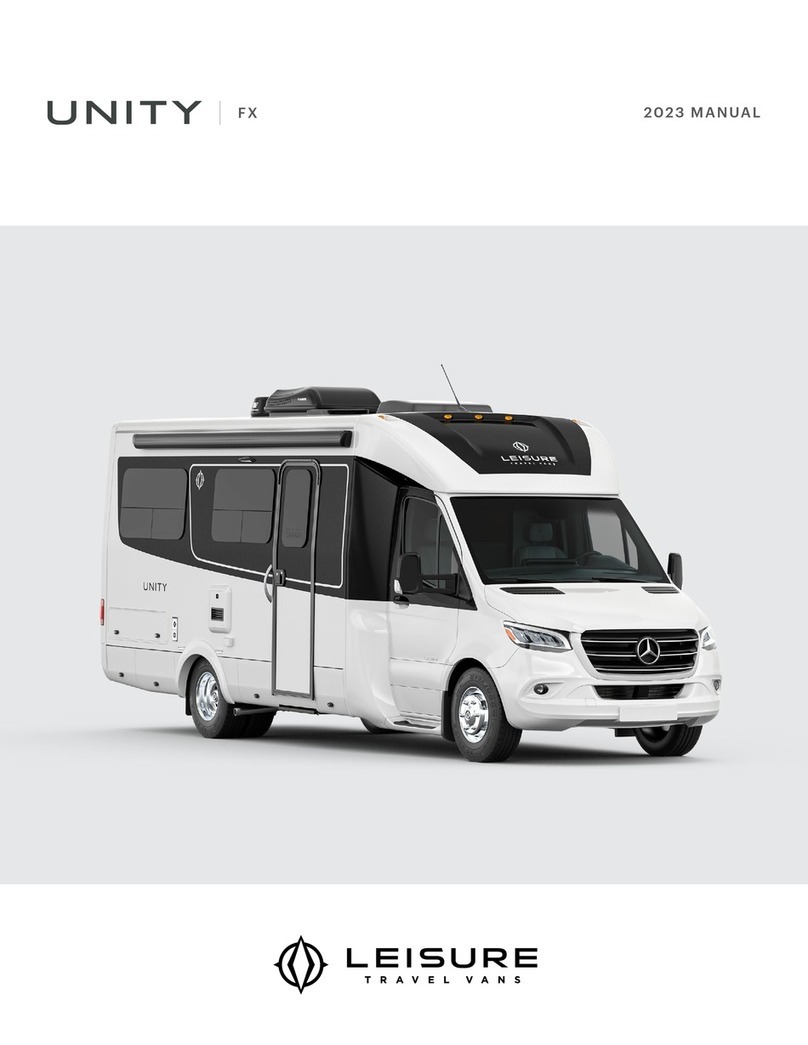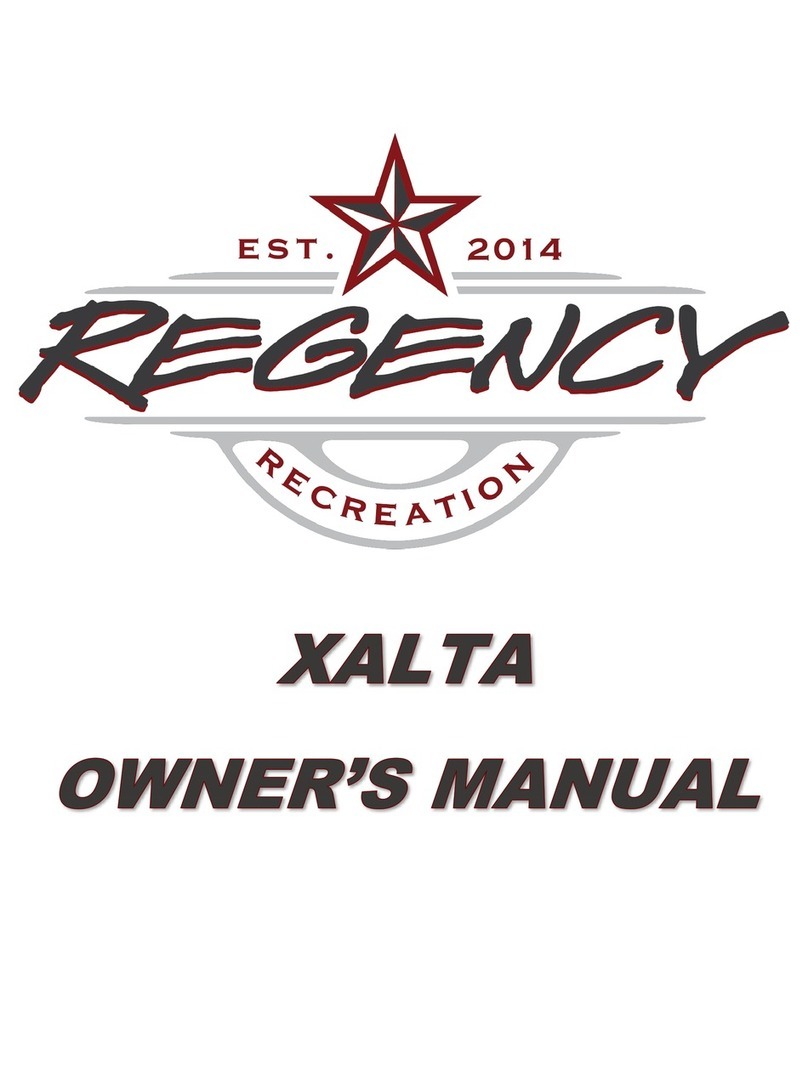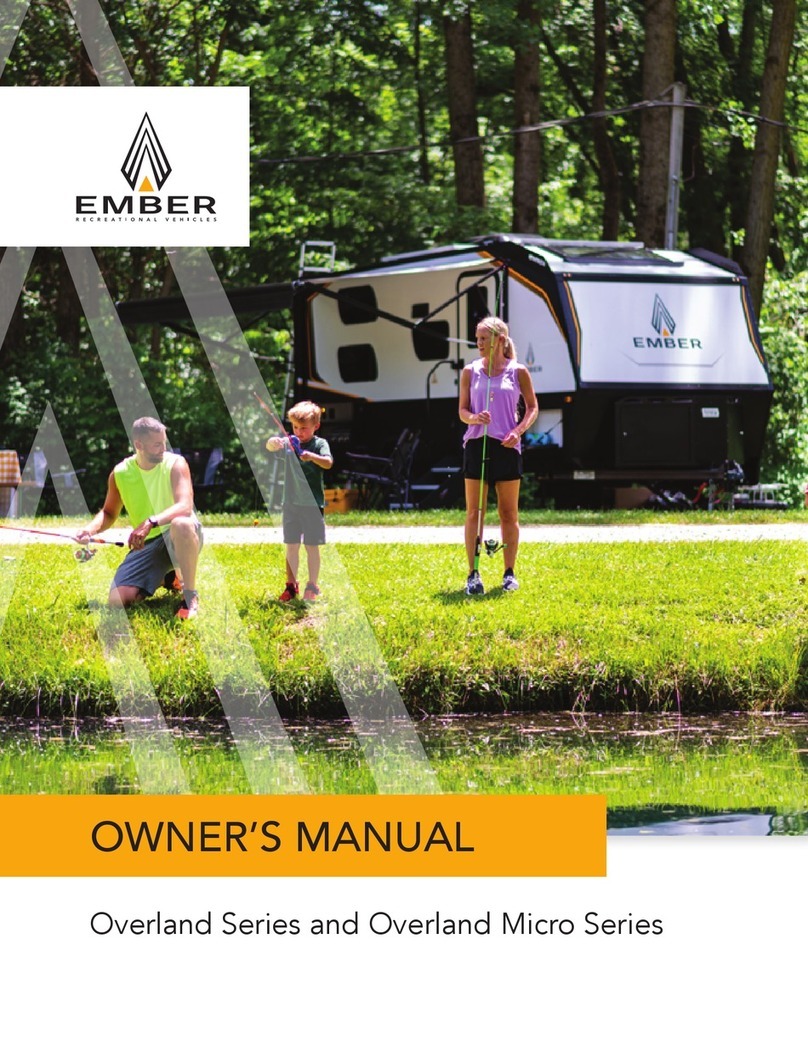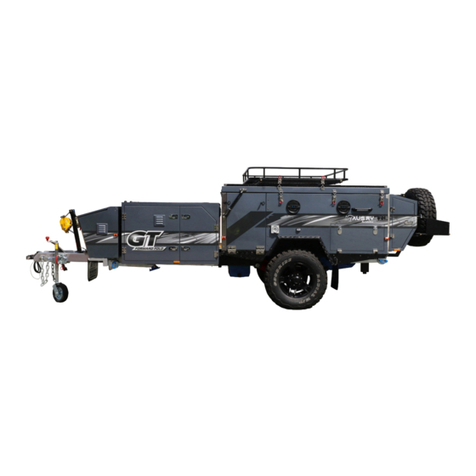
Contentswww.mdcusa.com Ph: 833 632 8721
Contents
My Trailer Details .................................................................1
General Safety Information..............................................2
Safety Alert Symbols and Signal Words.......................2
Reporting Safety Defects..................................................3
Tow vehicle and Trailer Compatibility ..........................3
Terminology & Abbreviations..........................................4
Secondary Escape ................................................................5
Tire Safety Information ......................................................6
Steps for Determining Correct Load Limit – Trailer 6
Trailers 10,000 Pounds GVWR or Less .......................6
Steps for Determining Load Limit – TOW VEHICLE6
Tire Safety – Everything Rides on it ..............................7
Safety First – Basic Tire Maintenance..........................7
Finding Your Vehicles Recommended Tire Pressure and
Load Limit ................................................................................7
Understanding Tire Pressure and Load Limits ..........8
Checking Tire Pressure ......................................................8
Steps for Maintaining Proper Tire Pressure...............8
Tire Size ....................................................................................9
Tire Tread.................................................................................9
Tire balance and wheel alignment..................................9
Tire repair ................................................................................9
Tire fundamentals ................................................................9
2.3.10.1 Information on Passenger Vehicle Tires.....9
Treadwear Number UTQGS Information................. 11
Tire Pressures ..................................................................... 11
Additional Information on Light Truck Tires ........... 12
Tire Safety Tips................................................................... 12
Propane Safety ................................................................... 13
Gas Certication................................................................ 13
General Safety.................................................................... 13
Propane Cylinder Safety................................................. 14
Gas Appliance Safety ....................................................... 15
Removing Door Vent Cover .......................................... 15
Isolating Appliances.......................................................... 15
Electrical Safety ................................................................. 16
Shore Power ........................................................................ 16
GFI Safety Switch .............................................................. 16
Battery Compartment..................................................... 16
General Safety.................................................................... 17
Brakes .................................................................................... 17
Brake Controller ................................................................ 17
Brake Maintenance and Adjustment ......................... 17
Maintenance........................................................................ 17
Jacking Your Trailer........................................................... 18
Dangerous Gases............................................................... 19
MDC USA Contact Details and Stores...................... 19
Trailer Specications ........................................................ 20
Using Your Trailer .............................................................. 21
Connecting to the Tow Vehicle..................................... 21
Towing with Trucks and Buses...................................... 21
Connecting the Hitch....................................................... 22
Coupling ................................................................................ 24
Uncoupling ........................................................................... 26
Connecting Wiring............................................................ 27
Connecting the Safety Chains ...................................... 27
Connecting the Breakaway ........................................... 27
Operating the Jockey Wheel ........................................ 28
Loading Your Trailer.......................................................... 28
Pre-Trip Inspection............................................................ 29
Operating Trailer Features.............................................30
Stabilizer Legs .....................................................................30
Connecting Shore Power................................................ 30
Using the Slide Out Kitchen........................................... 31
12 Volt Electrical System................................................ 32
Control Panel ...................................................................... 32
Towing Your Trailer........................................................... 33
Speed and Road Conditions........................................... 33
Trailer Sway.......................................................................... 33
Fatigue ...................................................................................33
Daily Checks ........................................................................ 33
Correct Wiring of Tow Vehicle.....................................34
Vehicle with or without smart alternator:................34
Choosing a Camp Site ...................................................... 35
Inclement Weather........................................................... 35
Care and Maintenance of the Trailer ......................... 36
Protection of Finishes ...................................................... 36
Corrosion Protection ....................................................... 37
Solar Panels.......................................................................... 37
Sealants ................................................................................. 37
Trailer Body Maintenance..............................................38
Winterizing the Trailer.....................................................38
Water Heater Bypass Installed ....................................38
